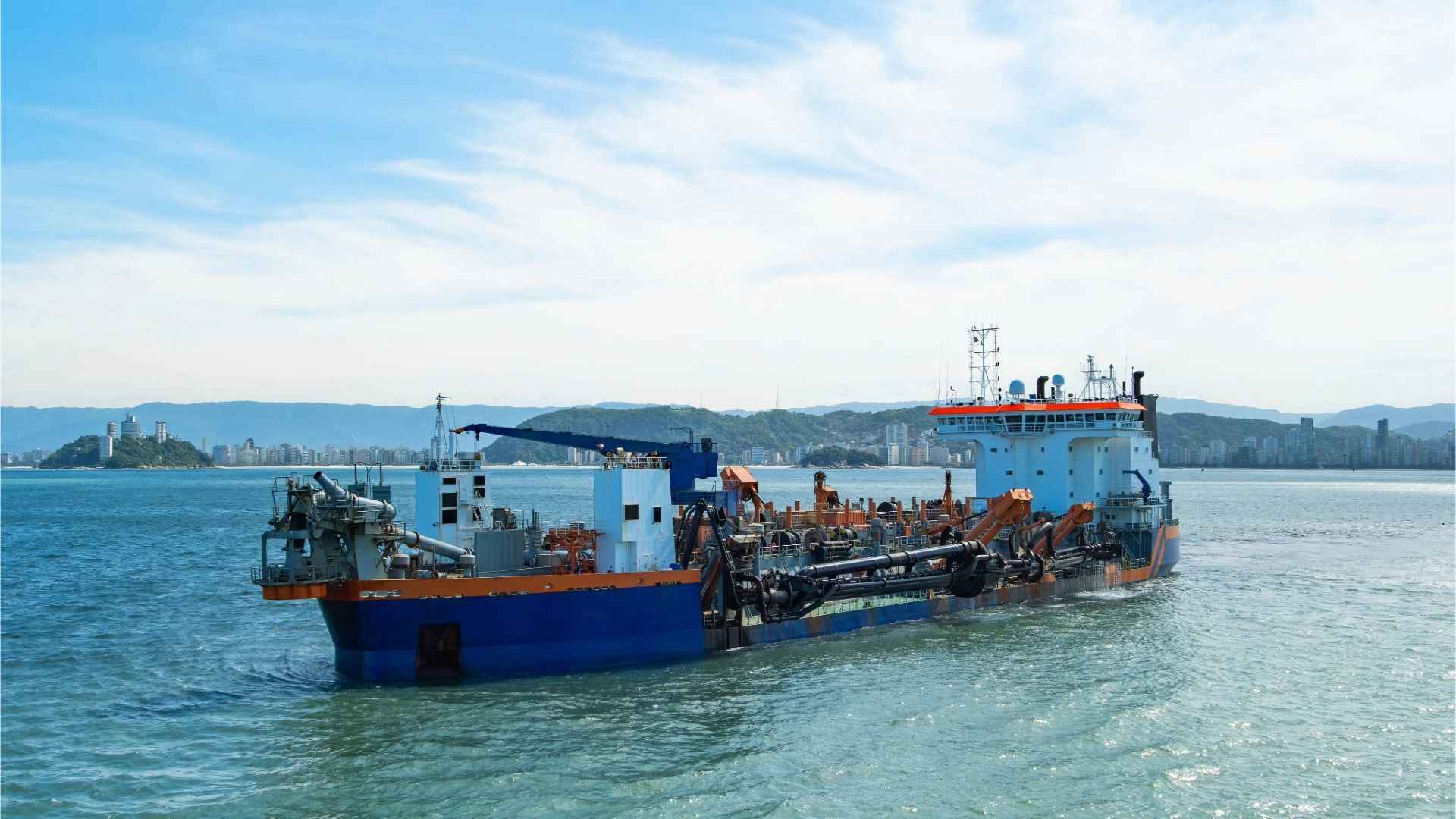Introduction
The U.S. Army Corps of Engineers (USACE) has announced a new harbor dredging initiative at Brunswick Inner Harbor, aimed at removing up to 835,000 cubic yards of sediment from the East River and South Brunswick River. This routine maintenance dredging operation is crucial for ensuring navigational safety, maintaining economic efficiency, and preventing the long-term buildup of shoaling in this vital Georgia port.
The Need for Dredging in Brunswick Harbor
Located along the southeastern coast of Georgia, Brunswick Harbor plays a key role in the region’s maritime commerce. As one of Georgia’s busiest deepwater ports, it supports the shipping of bulk goods, vehicles, and forest products. However, like many coastal ports, Brunswick is constantly subject to sediment deposition from tides, river currents, and upstream runoff. Over time, this buildup of sediment leads to shoaling, a process that reduces channel depth and poses hazards to navigation.
Without regular dredging, these shallow areas can limit vessel access, increase the risk of groundings, and reduce the overall efficiency of port operations. Shoaling is particularly problematic in the East River and South Brunswick River sections of the harbor, where sediment tends to accumulate quickly. To address this, USACE conducts ongoing monitoring and maintenance to preserve safe channel depths for both commercial and military vessels.
Scope of the Brunswick Inner Harbor Dredging Project
The newly announced dredging contract includes removal of up to 835,000 cubic yards of material from critical segments of the harbor. This will include:
- East River (station 0+000 to 12+000): This area includes the East River Turning Basin and adjacent transition zones. The turning basin is essential for large vessels maneuvering within the harbor.
- South Brunswick River (station 0+000 to 7+000): While not always included in regular dredging schedules, this section is targeted when shoaling becomes problematic. It is regularly monitored on a monthly basis to determine when dredging is needed.
The primary method for this project is hydraulic cutterhead dredging, which is especially effective for inner harbor environments with soft or silty sediment. This technique uses a rotating cutter to loosen material, which is then suctioned and transported via pipeline to a designated disposal site.
Disposal and Environmental Considerations
The dredged material from this operation will be placed in the Andrews Island Dredged Material Containment Area (DMCA), which is strategically located adjacent to both the East River and South Brunswick River. The containment area is designed to safely receive and store large volumes of sediment while minimizing environmental impact.
USACE has long emphasized environmentally responsible harbor dredging practices. Before any project begins, environmental assessments are conducted to ensure minimal disturbance to local habitats, water quality, and marine life. In many cases, dredged material can even be repurposed for shoreline restoration, habitat creation, or levee construction. However, in Brunswick’s case, containment in Andrews Island is the most efficient and sustainable solution.
Project Timeline and Contractor Involvement
USACE is currently seeking qualified contractors to perform the dredging. The contract typically runs for 120 days from notice to proceed, with work expected to begin in late summer or fall—a seasonal window chosen to reduce ecological disturbance and align with favorable weather and tide conditions.
This harbor dredging project is part of a larger federal commitment to maintain navigable waterways, particularly those that support regional commerce. For contractors, this project presents an opportunity to contribute to essential infrastructure while showcasing efficient and environmentally responsible dredging techniques.
Importance of Harbor Dredging to Regional Commerce
The Brunswick Inner Harbor is a hub for automotive imports and exports, with the Port of Brunswick consistently ranking among the top U.S. ports for roll-on/roll-off cargo. Ensuring that vessels can access the harbor without depth limitations is critical to maintaining shipping schedules and avoiding costly delays.
Beyond commerce, dredging plays an important role in national defense. Military vessels use U.S. harbors for deployment and training, and unobstructed waterways are vital to those operations. Regular maintenance dredging helps keep these routes accessible at all times.
Additionally, harbor dredging helps mitigate flood risks by maintaining the natural flow of rivers and channels, especially during heavy rainfall or storm surges. This makes the Brunswick project doubly beneficial—supporting economic activity while also contributing to local resiliency.
Long-Term Monitoring and Maintenance
One of the most important aspects of harbor dredging is that it is not a one-time task. Sediment will always return, and the cycle of deposition and removal is ongoing. In Brunswick, monthly hydrographic surveys are conducted to identify sediment buildup and prioritize future dredging zones.
This proactive approach allows USACE to stay ahead of potential problems, reduce emergency dredging needs, and manage long-term harbor health more cost-effectively. With shoaling often occurring unpredictably, especially after major storm events, this monitoring is essential for timely intervention.
Conclusion
The Brunswick Inner Harbor dredging project reflects the critical role that ongoing maintenance plays in supporting navigable waterways. By removing over 835,000 cubic yards of sediment from the East River and South Brunswick River, USACE is not only ensuring continued access to one of Georgia’s most important ports but also preventing dangerous shoaling that could disrupt commercial and military maritime traffic.
As demand for U.S. port capacity continues to grow, harbor dredging remains an indispensable tool in keeping trade routes open, safe, and efficient. The Brunswick project is just one example of how thoughtful planning, modern dredging techniques, and environmental stewardship come together to protect and enhance national infrastructure.
